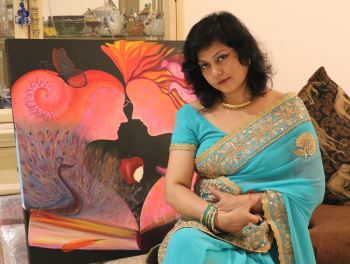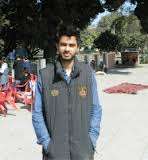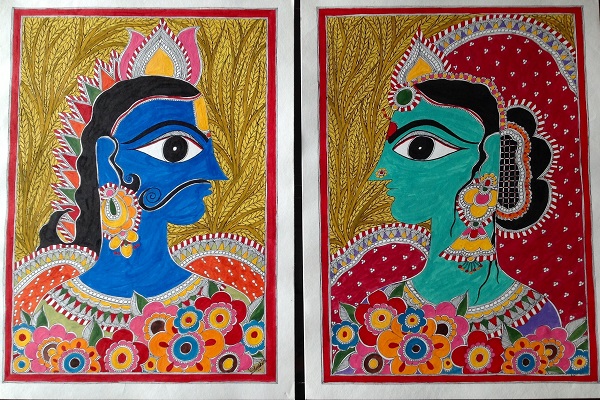
India is the birthplace of many unique styles of art and architecture. Since the inception of Indus valley civilization, sometime around the 3000 BC, art has been used as a measure to depict something, whether it is the religious ideologies or common physical observations. Indian craftsmen have worked in all the significant areas. Outstanding works of Indian architecture, sculpture, metalwork, pottery and textiles were done during the classical Gupta and medieval period. From Gupta period to more recent Mughal and British era, Indian art has evolved manifold through the centuries. Art scholars from across the world take the keen interest when it comes to traditional Indian art as they get to learn about the people of India living during that time. Their day to day routines, the scenic beauties of those ages, the traditions, and cultures of medieval India, political ideologies and religious beliefs and influences; all these can be actually seen in and studied through the traditional Indian paintings. The remarkable and exact portrayal of the subject is the prime feature of traditional Indian art. In this article, we shall learn about various interesting facts concerning traditional indian art .
Recommended for you: A Glance at the Ethnicities of India Through Traditional Art
The Origin
Starting with ancient rock cut paintings and murals the Indian art customs compass around 8,000 years. Bhimbetka caves in Madhya Pradesh are the finest example of prehistoric cave paintings and murals. The art of Indus valley was more advanced and researchers say that it was during this time period only that better paintings tools and techniques were developed. However, the subject and themes of paintings were quite basic. For example, Indus valley dwellers would paint what they would see; the natural beauties, scenic landscapes, sunsets, sunrises, hunting parties, people dancing etc. It is believed that it was during this period only that people had started to paint and sculpt their deities. As we move on to the more advanced and modern India ruled by various foreign and domestic dynasties, we observe that the Indian traditional art scenario varies from one region to other. The influences of cultures and more importantly, the religious beliefs of the artists are quite evident in their paintings.
Painting Tools
The painting tools used by pre-historic men were very basic. They would use wooden sticks made from tree branches, or paintbrushes made of bones and animal hair only to dip them in natural extracts to paint on the caves. Blood, charcoal mixed with oil, extract from roots and leaves etc. were used as paints. As the time evolved, tools and paints became more durable and advanced. For example, Mughal paintings were done on paper using very fine and precise paintbrushes and pens. There is an Indian technique of painting called Pattachitra that deals with cloth-based scroll painting. In some rural parts of India, Palm leaves are also used to paint the images of gods and goddesses. It takes a lot of expertise and use of very fine brushes and permanent colors to make cloth and palm leaves based paintings. Tanjore paintings of South India are famous worldwide for using precious stones and metal work. These paintings are usually done on canvas stretched over wooden frames. Additional media such as walls, wooden panels, glass, papers, mica and even ivory are used.
The Themes and Techniques
Painting styles and techniques vary from artist to artist. According to the various styles, Indian traditional paintings can be broadly divided into following categories:
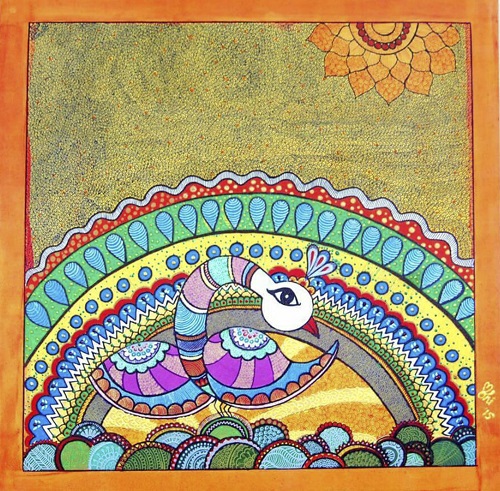
Madhubani Paintings: Bihari style of art, famous for the depiction of festivities, occasions, and gatherings. Rural Madhubani art includes a painting of walls of houses.
Read More At: Madhubani Traditional Indian Art- Unveiling Some Intriguing Facts
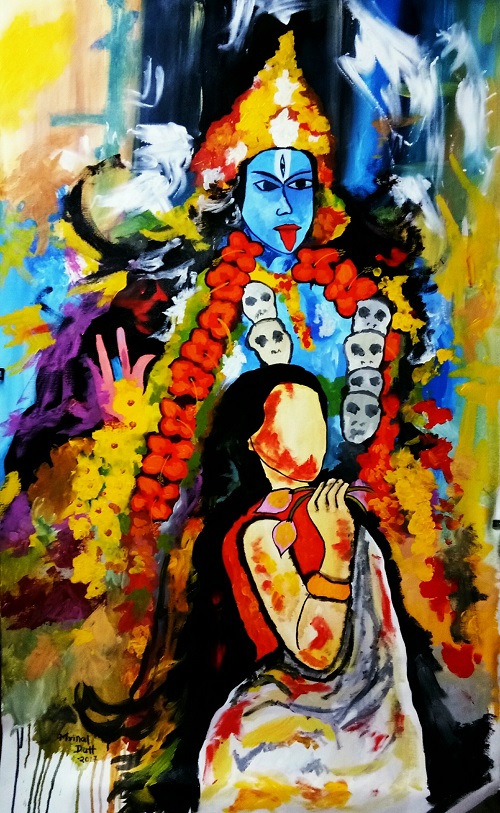
Kalighat Paintings: Famous for the depiction of Hindu deities especially Kali, these paintings are taken by a lot of tourists as souvenirs from the cities of Bengal.
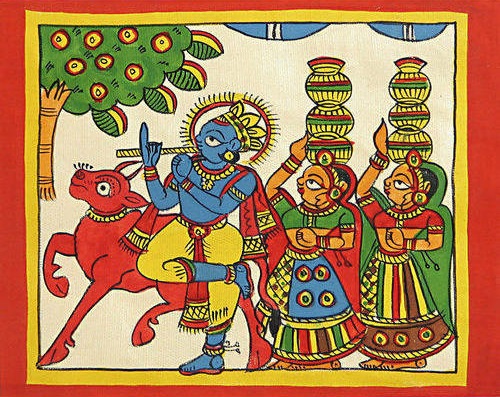
Phad Paintings: This Rajasthani style of traditional Indian art is done on huge pieces of clothes and used by priests as mobile temples of the folk deities.
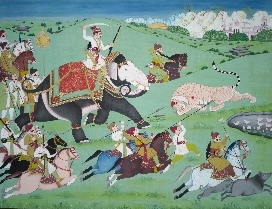
Mughal Paintings: Introduced by Akbar, the Mughal paintings are a unique blend of Muslim and Hindu styles of paintings. The themes are diverse and include a depiction of hunting parties, war scenes, the portrayal of Mughal emperors etc.
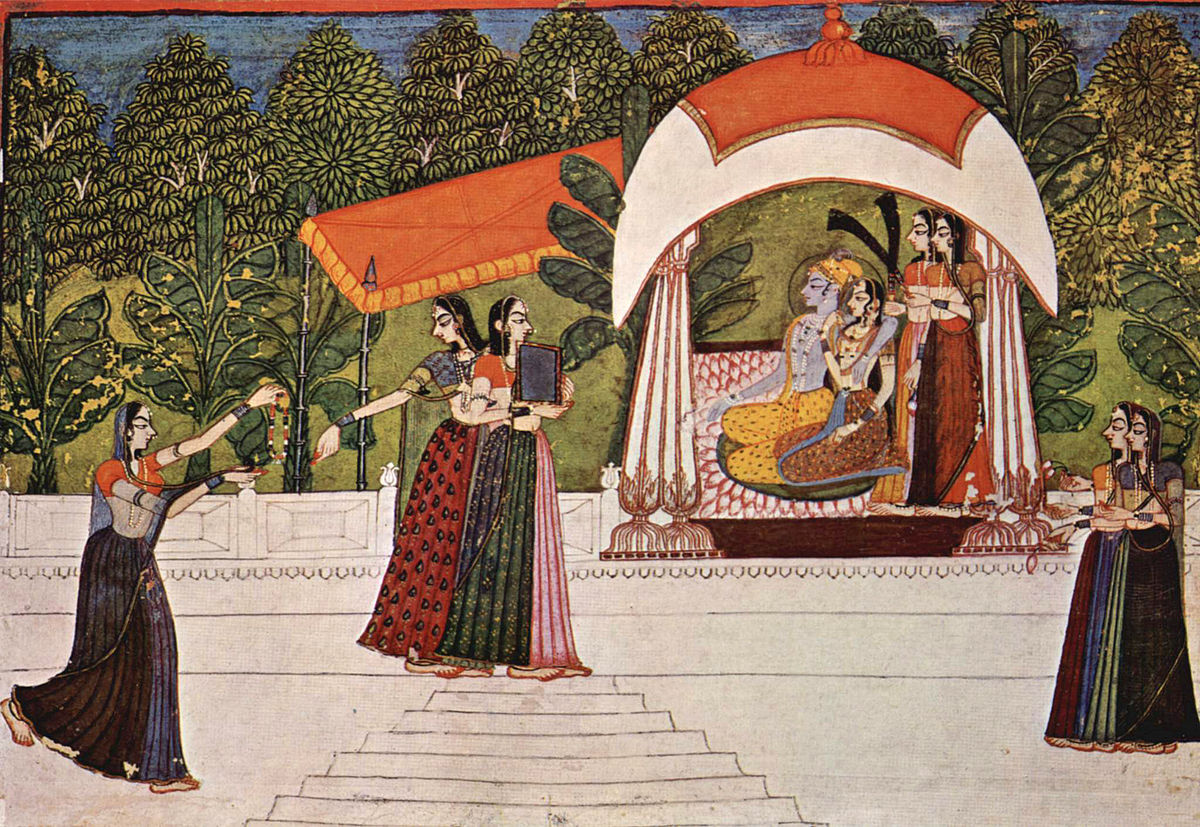
Rajput Paintings: Since Rajput worship nature, their paintings are full of natural elements such as wildlife, flora, sand dunes, landscapes etc.
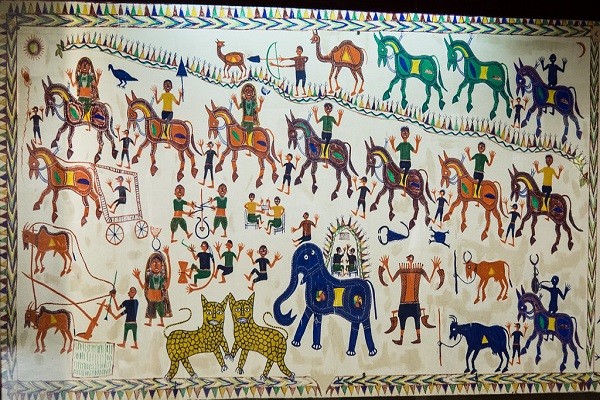
Pithora Paintings: These ritualistic paintings are done by the tribes of Rathvas and Bhilalas in Gujarat. Primarily, executed on the inner walls of the house, these paintings are imbued with the Indian artistic tradition.
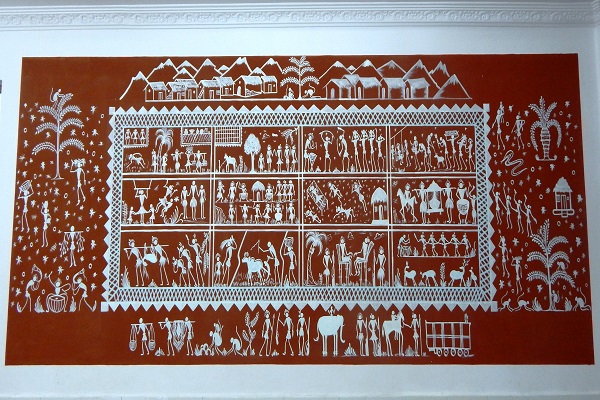
Saura Paintings: Practiced by the Sauras of Orissa, this art form elaborates on the story of the tribe for hundreds of years. With a history that has been mentioned in the Epics of Ramayana and the Mahabharata, this art of the Sauras is rich with symbolism and meaning and narrates interesting Indian art facts in its own distinctive style.
Till date, Indian traditional paintings give an intriguing knowledge into the ways of life people who lived way before our time and continue to inspire and fascinate generations of artists to come. Indian traditional art is one of the many things that continue to make India proud and narrate an interesting story about the country’s cultural heritage. As mentioned earlier, it is better and more convenient to learn about a country’s history by going through its rich collection of paintings, art, and crafts. This method of “visual learning” helps to create an understanding of a country in the ways never experienced before.













